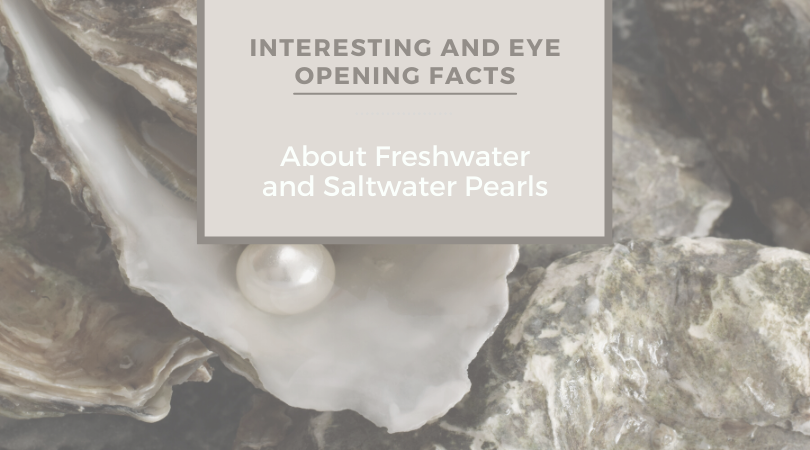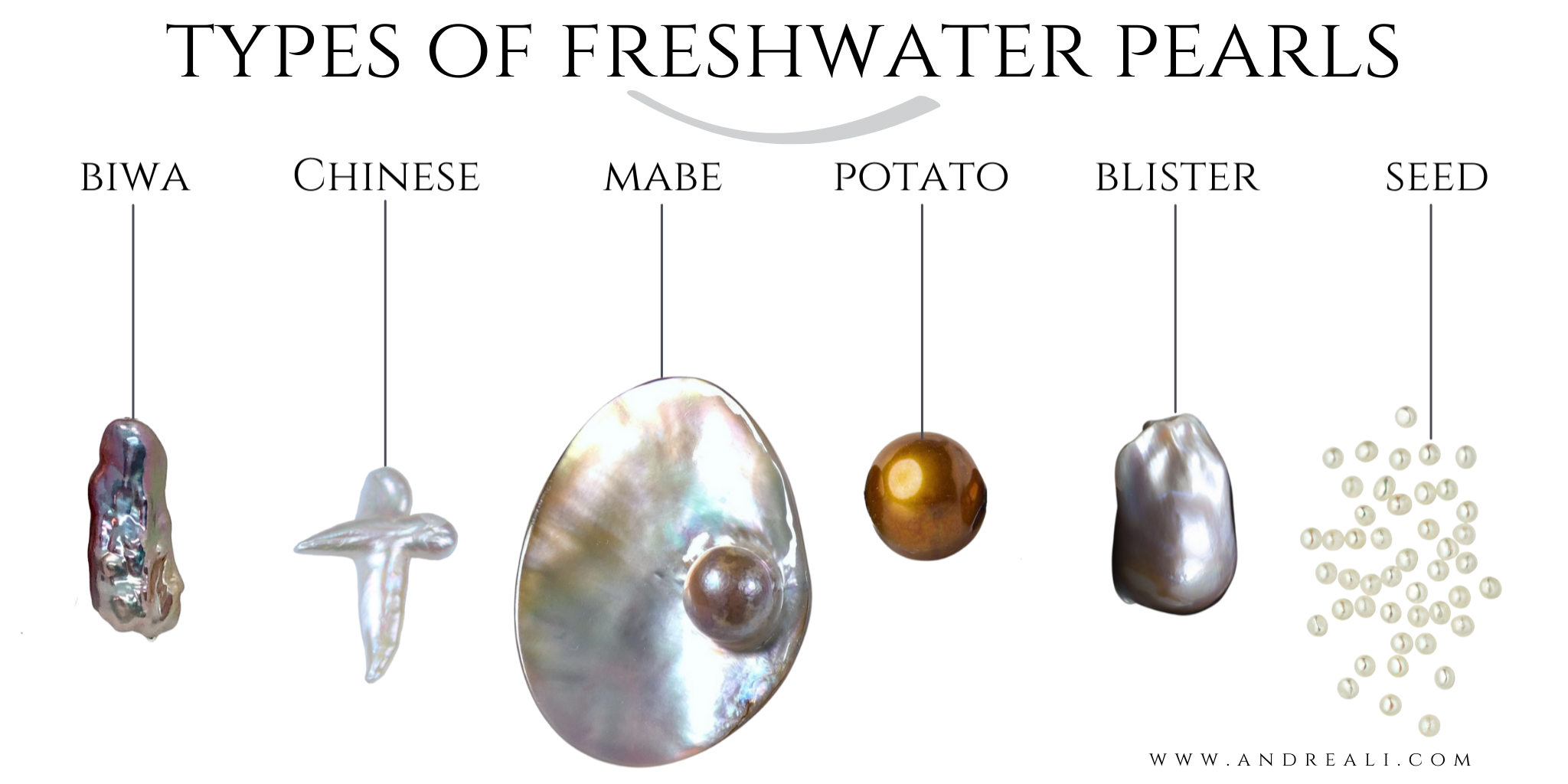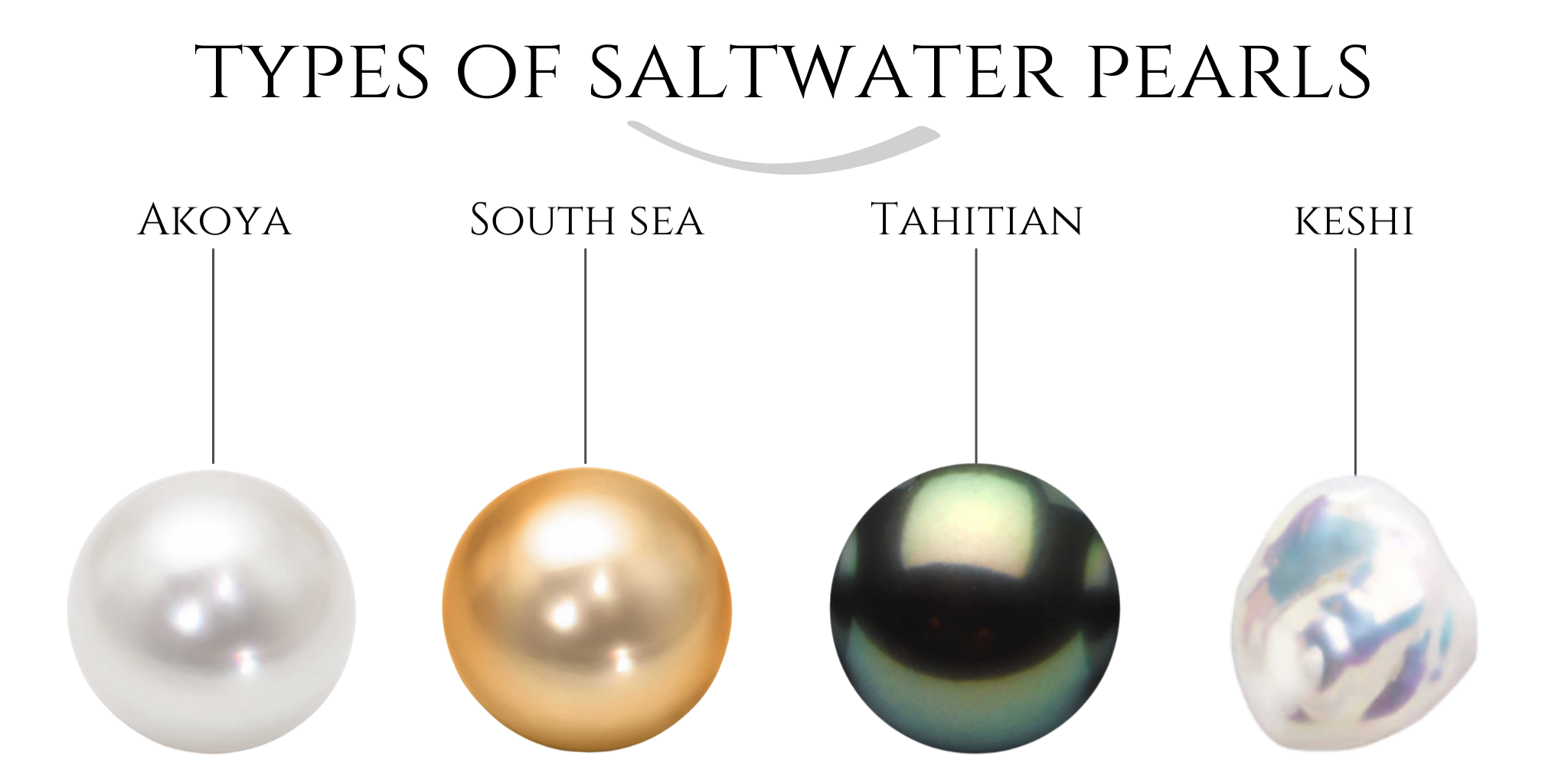Which Pearls Are For You?
It’s hard to believe with the abundance of pearls today that their fate was once destined for extinction many years ago. It took the son of a Japanese noodle maker to change the history of these tiny miracles forever when he successfully produced the world’s first cultivated pearl in 1893.
With natural pearls making up less than one percent of available pearls, commercial markets now consist entirely of cultured pearls. You’ve probably heard of some of the more popular types of cultured pearls, such as Tahitian or Akoya pearls, but perhaps you don’t know the differences between them.
Get to know the characteristics that are unique to each type of cultured pearls in the post. You should get a valuable base of knowledge to make you a more savvy shopper of pearl jewelry. Get insight on the following -
Know the difference between freshwater pearls and saltwater pearls
The different types of freshwater pearls
The different types of saltwater pearls
Which types of cultured pearls are more valuable
Freshwater Vs. Saltwater Pearls
The main differences between freshwater and saltwater pearls can be boiled down to three main factors -
How each type is nucleated.
The type of mollusk used for growing the two types of pearls.
The water sources in which they are farmed, obviously giving them their namesake.
Let’s cover what nucleation is first to give some context before exploring how each type works. Nucleation is the inception of how a pearl is formed, essentially replicating the process that nature created by manually triggering the production of a pearl. This can be done in two ways -
Freshwater Pearls - A small piece of mantle tissue is surgically implanted inside the mussel, creating a pearl sac to form and begin secreting nacre to produce a pearl.
Saltwater Pearls - A small piece of mantle tissue and an irritant such as a bead or tiny piece of mollusk shell is implanted inside the oyster, creating a pearl sac to form and begin secreting nacre around the irritant.
The two distinct differences between the process for freshwater versus saltwater pearls give each type its distinctive characteristics. Because freshwater pearls are nucleated without an irritant, the mussels produce pearls made entirely of nacre. Without a base to add layers of nacre to, the pearls created are usually irregular in shape.
Saltwater pearls are known for their perfectly round shape because the layers of nacre secreted have a foundation to build on. Since perfectly matched round pearls are in high demand, this contributes to their overall more increased value.
The other variation is the type of mollusk used in the nucleation process. Because freshwater pearls are farmed in ponds and lakes, the mollusk of choice is various freshwater mussels species. With saltwater pearls, certain species of saltwater oysters are used that are specific to the region of the world where they are farmed.
Many of the saltwater species of oysters used in cultivation have strict regulations that limit the number of oysters a single pearl farm can nucleate in a year. These are meant to protect their numbers from depleting to dangerous levels. This scarcity is another contributing factor to the price difference between saltwater and freshwater pearls.
One interesting thing to note here is the anomaly of Keshi pearls. This type of pearl is proof that Mother nature will find her own way into the creative process regardless of how calculated the human touch is when it comes to cultivation.
These tiny miracles occur when a pearl sac accidentally splits into two or the oyster rejects the nucleus before a pearl is fully formed, leaving behind the vacancy of a pearl sac that will begin secreting nacre on its own. They are the closest thing to a naturally occurring pearl, but since they are still a product of the nucleation process, they’re still considered cultured.
Types of Freshwater Pearls
Freshwater pearls have the most variety out of all the pearl types due to them being more commonly produced. Because they’re typically tissue nucleated without an irritant as a base to form nacre around, they are more irregular in shape.
More recent experimentation with bead nucleated pearls is creating a new market for producing a freshwater variety that rivals the quality of saltwater pearls. This new Chinese process has made a new brand of pearls called Edison, Ming, or what is known as ‘ripple pearls.’
Regular types of freshwater pearls -
Potato and rice pearls - These Chinese freshwater pearls tend to have a more wrinkled surface with other blemishes such as pits and circling. They are grown the fastest, and much of their characteristics directly result from their short cultivation period, such as low luster.
Biwa pearls - The largest lake in Japan, Lake Biwa, was the first freshwater culturing site. These pearls are known for their high luster, good quality, and smooth surfaces. Their namesake is often used widely in labeling freshwater pearls cultivated in China to increase value perception.
Chinese freshwater pearls are a product of early experimentation of nucleating them with an irritant and mantle tissue. Chinese perliculture has experimented using various carved mussel shell shapes in the production of freshwater pearls. Coin-shaped pearls started the trend of different flat-shaped pearls that included an extensive range of popular forms.
Seed pearls - These are the freshwater version of Keshi pearls. They are tiny naturally occurring pearls that resulted from the mollusk expelling the nucleus, leaving behind an empty pearl sac.
Blister pearls - These pearls grow attached to the inside shell of a mussel rather than loose in the mantle. This causes them to have a flat side without nacre.
Mabe pearls - These unique creations are what could be considered as the negative of a pearl. A form of blister pearl that grows attached to the mollusk’s inside surface and around half bead nucleus glued on the shell’s inside. Nacre accumulates for around two to three years and is then cut out. This leaves a hollow pearl impression behind, which is filled with resin to reinforce the integrity and then backed with mother of pearl.
Types of Saltwater Pearls
Saltwater pearls are less common due to the longer time it takes for an oyster to produce a pearl. Additionally, saltwater oysters can only create 1-3 pearls per mollusk versus freshwater mussels which can house up to 25.
Because saltwater pearls are bead nucleated rather than tissue, they are typically perfectly round. Due to the specificity of oysters used in each farming region, each type of pearl has a distinct color range.
Types of saltwater pearls -
Akoya - These are considered to be some of the loveliest pearls grown today. Most Akoya pearls are farmed in Japan, with its southern half having the world’s largest habitat for Akoya oysters. Cultivation practices based on Mikimoto’s original discoveries have been carefully refined over the last century to produce the classic white pearl. China and Vietnam also produce these perfectly round pearls, known for their metallic luster.
South Sea - These pearls are referred to as the Queen of Pearls and are considered to be the most expensive type of pearl. Their rarity relates to the oyster species used in cultivation that have strict quotas in efforts to preserve them. With longer cultivation periods lasting 2-3 years, they are the largest saltwater pearls on the market. They are known for their silky luster and golden color range.
Tahitian - These pearls have gained a considerable amount of popularity among jewelry designers and consumers alike. Their signature baroque shape and dark exotic colors lend a more modern touch over their classic white strand necklace predecessor. Tahitian harvests are much smaller due to the reduced survival rates and scarcity of pearl-producing oysters.
Keshi - These little anomalies are the closest thing to a naturally occurring pearl and are the by-product of the cultivation process. They are known for their small size and irregular shape due to their lack of nuclei.
Which Is More Valuable?
Two main factors contribute to the differences in value between freshwater and saltwater -
The time it takes to grow a pearl.
How many pearls a single mollusk can produce.
Despite consisting almost entirely of nacre, freshwater pearls have lower quality luster than saltwater types. This may be counter-intuitive since thicker nacre directly relates to the quality of luster. However, this is the case because saltwater pearls take a longer time to grow.
There are other contributing factors to saltwater pearls scarcity and rarity, but the fact that pearl-producing oysters can only produce 1-3 at a time is one of the main ones. Freshwater varieties are so hearty and hefty that they are capable of producing 25 or more at once.
Couple that with the significant frequency of freshwater harvests over saltwater, you should begin to understand why there is a remarkable difference of value between the two. It’s worth mentioning again in the context of the cost that modern exploration of applying saltwater cultivation practices to freshwater varieties produces pearls that closely rival the quality.
Conclusion
If you’re still on the fence about deciding which type of pearl is for you, consider that modern jewelry designers are reimagining the way pearls are incorporated into contemporary pieces. You’ll find pearls present in almost every design of mine, even though I don’t work exclusively with them.
The history pages reveal pearl’s long coveted history as one of the world’s most desired and precious gems. The classic stylings of adornment, however, have evolved from the simple strand of pearls. The inventive ways designers are using pearls in their designs make them more approachable and versatile.
The common perceptions of pearl’s formal appeal are getting a stylish upgrade into wearable pieces that are appropriate for any occasion for an added touch of everyday glamour. Not only that but the wide availability of pearls, thanks to cultivation, make them accessible with every price point.
Regardless of your budget, you should be able to find the perfect piece that you will cherish forever with the seemingly endless options to choose from. Still curious about pearls? Download my Ultimate Guide to Pearls below.







